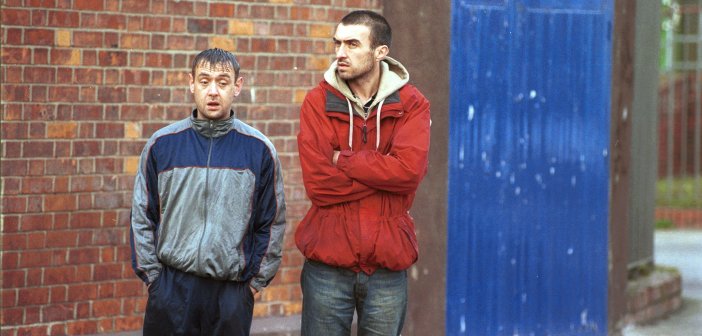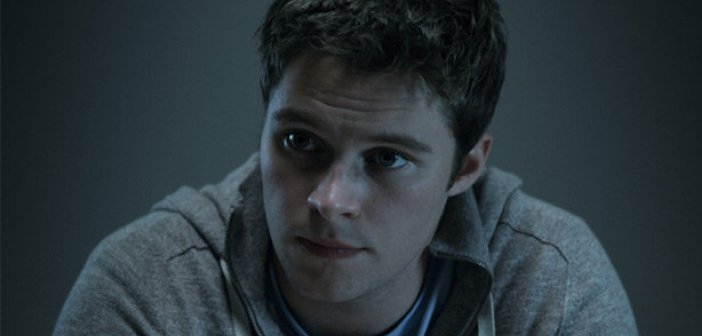Lenny Abrahamson – You’re Letting Me Down
Lenny I love you, but your letting me down.
It’s been said by many creative types that art is not a democracy. Filmmakers, authors, musicians, they all insist that they make their art for themselves and for themselves alone. Generally speaking this is a laudable idea. Art, really great art, shouldn’t be something that is made for purely commercial reasons, it should have something to say about the world as a whole, about what it means to be human. Their vision, and their vision alone about what it means to be human. The attitude that art is not a democracy needs to be held by the person that consumes that art as well. Common advice for aspiring creatives is that the world doesn’t owe you a living. It’s impossible for somebody to read every book, to watch every film, to see every painting. This is what creates standards. If I, you, choose to invest your time in something then that thing has got to meet and adhere to certain expectations. For established artists, we have set expectations, we know that they can tell us something that they can convey a message, and we hold them to these expectations. An Irish film maker that has been struggling to meet expectation recently is Lenny Abrahamson.
Similar to how religion in its effects, its influences, and its general choke over society was something that nearly every Irish creator of the past felt the need to the address, the Celtic Tiger is something that looms large over a lot of work being produced in Ireland now. The Celtic Tiger was, without exaggeration, something that uprooted and changed the fabric of Irish society, changed how we approached and how we viewed the world. Money became the new religion. The Roman Catholic Imperialism that controlled the nation for so long was replaced by another kind of ism – consumerism. This affected us as people, and its effects deserve to be chronicled. One of the best chroniclers who emerged as having a singular vision for examining this changing Ireland was Lenny Abrahamson.

Abrahamson first made waves with his debut feature, 2004’s Adam and Paul. Influenced equally by the slapstick of Laurel and Hardy and the theatre of Samuel Beckett, the film is a bleak tragi-comedy following a pair of eponymous Dublin junkies. The film was an irreverent take on an Ireland, or even a Dublin, that was clearly going through serious change, and it examined those on the margins of Irish society, who where only becoming more and more marginalised by the changes sweeping the country. In 2007 Abrahamson had two high profile projects both of which established him as a very serious director in contemporary Ireland. Garage is probably the most well known of these, and it remains one of the strongest Irish films ever made. Set in rural Ireland, Garage sees Pat Shortt play against the type as Josie, a simple minded petrol station attendant. Josie’s way of life looks set to end as his petrol station (which also serves as his home), is to be sold to property developers. The well meaning but childlike Josie has no concept of life outside of his petrol station, and the film documents the tragic results that occur as he tries to make his way into the world. As with all great directors, Garage works fundamentally very well as a film. Its not overtly about a changing Ireland, and it’s never preachy, but at the same time there are things to be read into. A local man drowns some pups whilst telling Josie about his holidy plans in Dubai, all the while refusing to give Josie one of the pups, and later in the smoking area of a pub, after a round of bullying Josie’s slow mindedness indoors, the same man asks Josie, sincerely, why he even bothers staying in their small town. In short, the movie could be read as a treatise on the fact that even though religion is slowly being washed out of the country, its replacement might be as intolerant of those who are different.
(The plot is remarkably similar to Donal Ryan’s 2013 novel The Thing about December, which much more explicitly deals with the effect of greed on rural Ireland)
Abrahamson’s other big 2007 project was a kaleidoscopic TV series for RTE, Prosperity. Each one of the four episodes followed a character in Dublin that had been left by the wayside in a country that never had it so good, ranging from a downtrodden immigrant, an alcoholic father, a bullied child and an increasingly helpless teenage mother. This series turned an eye to something that many wouldn’t want to acknowledge, the fact that in any economic boom, as is the case with capitalism, there will be people that are left with nothing or left worse than before. Similar to Garage, it was a stark reminder that the country was not the utopia that the statistics from the Celtic Tiger suggested.

In 2012 Abrahamson launched his third movie, which should have been the one that established him as the quintessential film maker for modern Ireland, What Richard Did. Its source material, Kevin Powers novel Bad Day in Blackrock, is essential reading for anybody that wants to know what type of people the Celtic Tiger turned us into, one of the freshest and most cutting Irish novels of recent years. And yet the film felt strangely anonymous. Power mentions early on in the novel that the story is idiosyncratically Irish, so deeply rooted in the Irish psyche that somebody who isn’t from the country might have trouble understanding. Abrahamson seemed to just take the absolute surface of the book’s plot and refused to explore any of its themes. Ostensibly, it’s a film and not a novel, and it can’t explore themes in the same way that a novel can, but that was never an issue for Abrahamson in past films. What Richard Did also felt like it could have been set anywhere in the world, rather than Dublin. There were rarely any wide shots or establishing shots that indicated its location. Where his previous films where 3D examinations of society, What Richard Did felt like a well made but empty drama. It is worth noting that this was the first film Abrahamson directed that wasn’t written by Mark O’Halloran, but the source material and the subject matter are very much inline with what issues he dealt with in his previous films. That What Richard Did is Abrahamson’s most anonymous film is mind boggling.

Last year, Frank saw Lenny Abrahamson move fully away from Irish society and start to turn his attention elsewhere. Up and coming Irish star Domnhall Gleeson lead the cast, which also included Michael Fassbender as the title character, in a screwball comedy about an eccentric musician. Bizarrely, we are told that the opening scenes, though recognisible as parts of Dublin, are set in England. Abrahamson’s most recent movie, Room, based on Irish author Emma Donoghue’s best selling novel, is likely going to be his most solipsistic effort yet and due for release in January 2016. Loosely based on the Fritzl case, Room follows the ordeals of a mother and her children trapped in a subterranean prison. Room is likely going to be the film that breaks Abrahamson as an international director. Indie studio A24, which has already produced some critical darlings this year, such as the End of the Tour and While We’re Young, looks set to push it heavily stateside.
Frank was one of the better films to come out last year, and there is no doubt that Room will be, at least, a thoughtful, disturbing and engaging film. Room should create a rise in Abrahamson’s star internationally. For long term fans, this is a bit bittersweet. On one hand it’s fantastic to see an Irish director start to get the international praise that he has long deserved, but on the other hand it will probably mean his future projects will be further distanced from Irish affairs. Which is a shame because Irish affairs are still ripe for being dissected and examined. The news is dominated by the trials of the people that, for the most part, have shaped the country for the past generation. Paul Murray’s latest novel, The Mark and the Void, examined the aftermath of economic crash and films such as Calvary and Gotta Get Out of Here looked at an Ireland that was increasingly becoming post-tiger as well as post-catholic. There’s still a lot to be said about how much this country has changed over the past two decades, there’s still a lot of discussion to be had about the forces that have shaped and are shaping Irish identity. Only now it seems one of the best voices leading the discussion has moved on.
Featured Image Credit: rte.ie


Interesting article but I disagree that he has strayed. As a private school goer, I can say What Richard Did is a pretty perfect encapsulation of a particular part of Irish society, albeit one that rode out the recession without much problem.